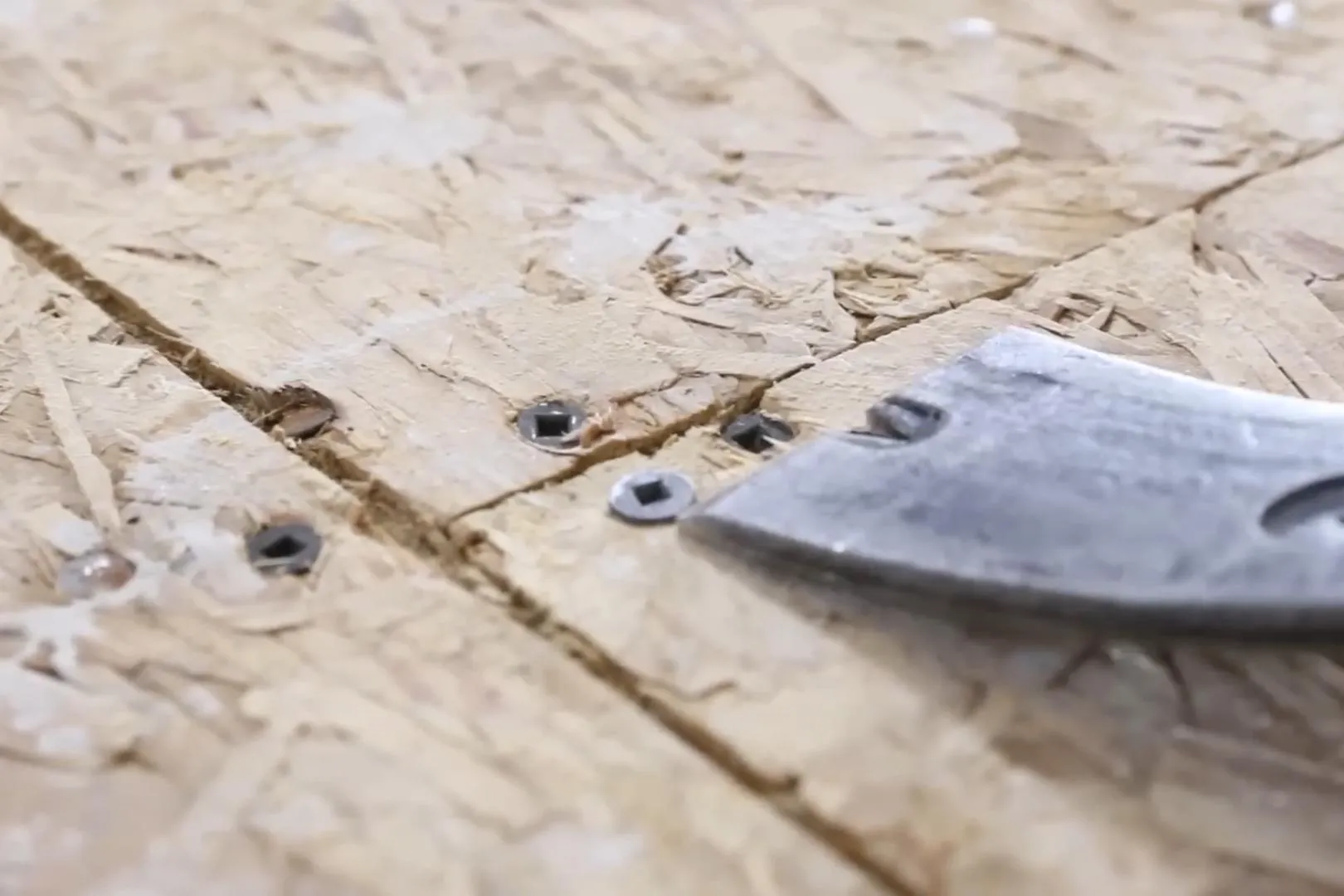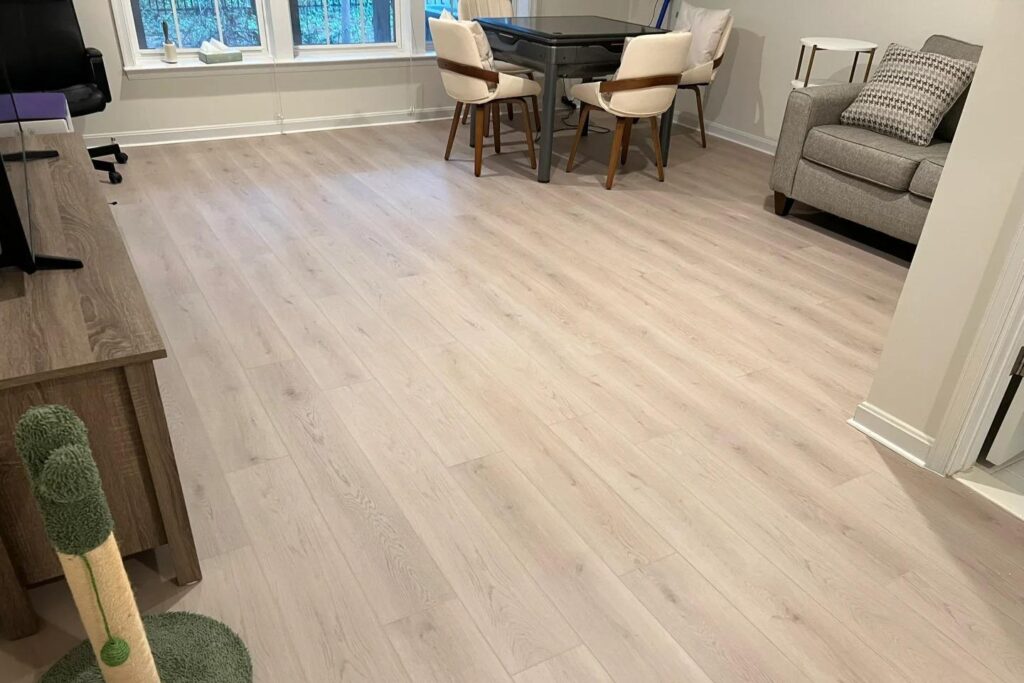If you’re planning a flooring upgrade and wondering, can you install vinyl flooring over tile?—you’re not alone. Many homeowners are looking for cost-effective, efficient ways to refresh their space without tearing up existing tile. The good news is: yes, in many cases, you can install vinyl flooring over tile, and it can save you a lot of time, effort, and money.
In this blog post, we’ll break down when it’s possible, what you need to consider, and how to do it right.
Why Choose Vinyl Flooring
Vinyl flooring has gained popularity for good reasons:
- Affordability – Compared to hardwood or ceramic tile, vinyl is budget-friendly.
- Easy Installation – Especially with click-lock systems or peel-and-stick options.
- Water Resistance – Great for kitchens, bathrooms, and basements.
- Design Variety – Modern vinyl mimics the look of wood, stone, or tile.
These perks make it an ideal choice for updating your floors without a full renovation.

Can You Install Vinyl Flooring Over Tile?
The Short Answer: Yes, But…You can install vinyl flooring over tile, but it depends on the condition of the tile. The existing surface must meet certain requirements to ensure the vinyl lays flat, adheres properly, and lasts.
Let’s dive into the details.
Factors to Consider Before Installation
1. Condition of Existing Tile
Flatness: The tile should be level. If there are deep grout lines, missing tiles, or uneven sections, you’ll need to fill or level the surface first.
Damage: Cracked or loose tiles can create issues under vinyl. Remove and repair these areas before proceeding.
Moisture: Ensure there’s no water damage beneath the tile. Moisture problems can affect vinyl’s performance.
2. Floor Height and Doors
Adding a new layer of flooring increases height. This could interfere with doors, appliances, or transitions to other rooms. Measure carefully and trim doors if needed.
3. Adhesion or Locking Systems
Peel-and-stick vinyl may not adhere well to glossy or uneven tile. In contrast, click-lock vinyl planks work better over slightly imperfect surfaces, as they “float” rather than stick.
Preparation Steps for a Successful Installation
If the tile passes your inspection, follow these steps to prepare the surface:
- Clean Thoroughly: Remove dirt, grease, or wax from the tile surface. A clean base ensures better adhesion.
- Fill Grout Lines: Use a floor leveling compound to fill deep grout lines or depressions, creating a smooth surface.
- Sand Glossy Tiles (Optional): If your tiles are shiny or glazed, lightly sand the surface to help glue-down vinyl adhere better.
- Check for Levelness: Use a long level to make sure the floor is even. Any significant dips or humps should be addressed.
- Dry Completely: Moisture is the enemy of vinyl flooring. Let all leveling compounds and cleaned surfaces dry fully before you start.

Best Types of Vinyl for Installing Over Tile
Not all vinyl is created equal. Here are the top options for tile-over installations:
- Luxury Vinyl Plank (LVP) – Ideal for floating installations. Mimics hardwood and is durable.
- Luxury Vinyl Tile (LVT) – Great if you want a stone or ceramic tile look.
- Rigid Core Vinyl – Includes SPC (stone plastic composite) and WPC (wood plastic composite) cores that can better handle uneven subfloors.
Avoid thin, low-quality sheet vinyl unless your tile is absolutely flat and blemish-free.
Installation Tips and Tricks
Here’s how to make your vinyl installation over tile go smoothly:
- Acclimate the Vinyl – Let your flooring sit in the room for 48 hours to adjust to temperature and humidity.
- Start in a Corner – This helps ensure straight lines and fewer cuts.
- Use Underlayment – Some vinyl flooring includes built-in underlayment, but if not, consider adding one for extra cushioning and sound dampening.
- Leave Expansion Gaps – Especially with floating floors, leave a small gap along walls to allow for expansion.
When You Shouldn’t Install Over Tile
In some situations, it’s better to remove the tile:
- Extensive damage or instability
- Moisture problems
- Excessive height issues
- In-floor heating systems not compatible with vinyl
When in doubt, consult a flooring pro before proceeding.
Can you install vinyl flooring over tile? In most cases, yes—and it can be a fantastic way to give your home a facelift without demolition. Just be sure to inspect the existing tile, prepare the surface properly, and choose the right type of vinyl for your needs.
This DIY-friendly upgrade can transform your floors in no time, with minimal disruption.
Want more flooring tips and home renovation ideas? Head over to ecobuildhome.com for expert how-to guides, product reviews, and sustainable home upgrade solutions. Whether you’re installing vinyl, composite decking, or eco-friendly wall panels—we’ve got you covered.
FAQ
Can vinyl plank flooring be installed directly over ceramic tile?
Yes, vinyl plank flooring can usually be installed over ceramic tile as long as the tile is clean, level, and in good condition. Deep grout lines or uneven tiles may need to be filled with a floor leveling compound first.
Do I need to remove the tile before installing vinyl flooring?
Not necessarily. If your existing tile floor is stable, flat, and free of major cracks or moisture issues, you can install vinyl flooring right on top. Removing tile is only needed when the surface is too damaged or uneven to work with.
Will the grout lines show through the vinyl over time?
They can if you don’t prep the surface correctly. To prevent this, use a floor leveler to fill in deep grout lines so your vinyl flooring lays smooth and flat.
Is it better to glue down or float vinyl over tile?
Floating vinyl (like click-lock planks) is often the better choice for going over tile because it doesn’t rely on adhesive sticking to the tile surface. However, if using glue-down vinyl, make sure the tile is sanded and properly primed.
Can I install peel-and-stick vinyl over tile?
You can, but only if the tile is very smooth and clean. Glossy or uneven tiles may cause adhesion issues, so it’s usually better to lightly sand the surface or use a primer designed for peel-and-stick applications.


